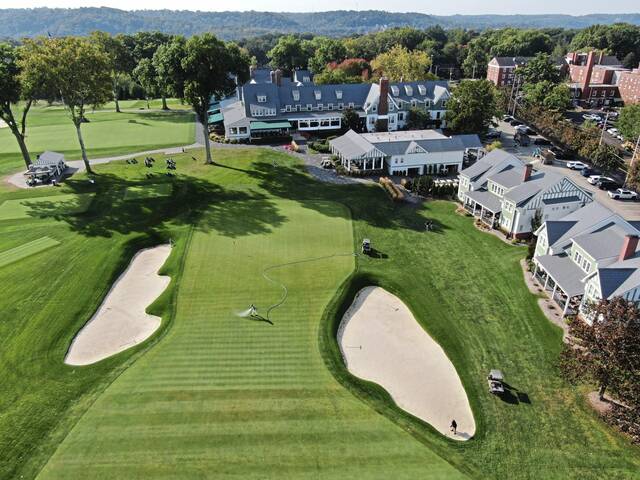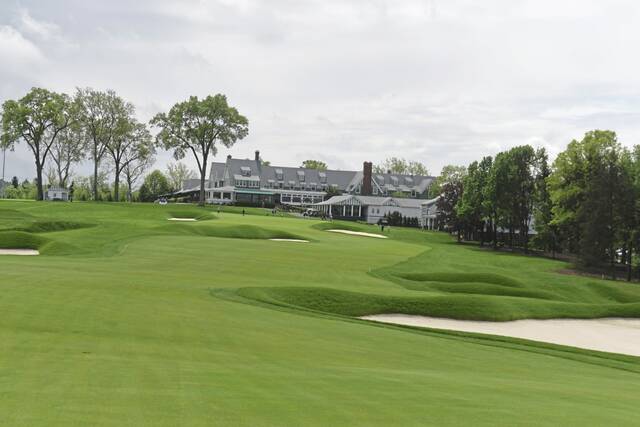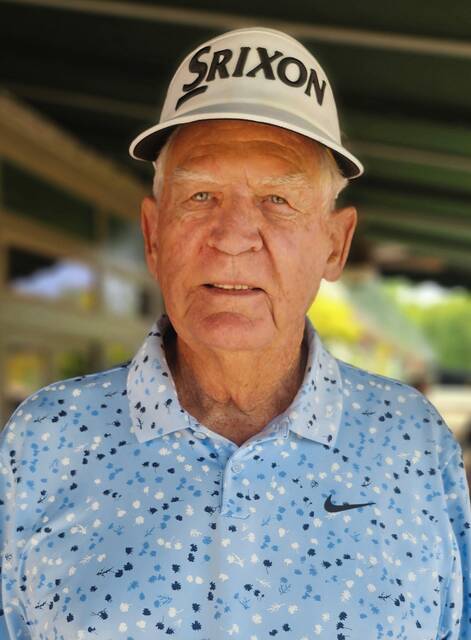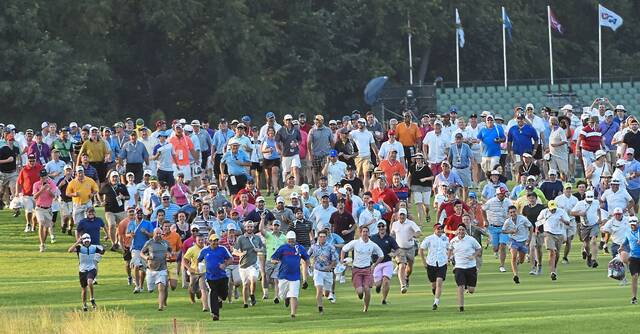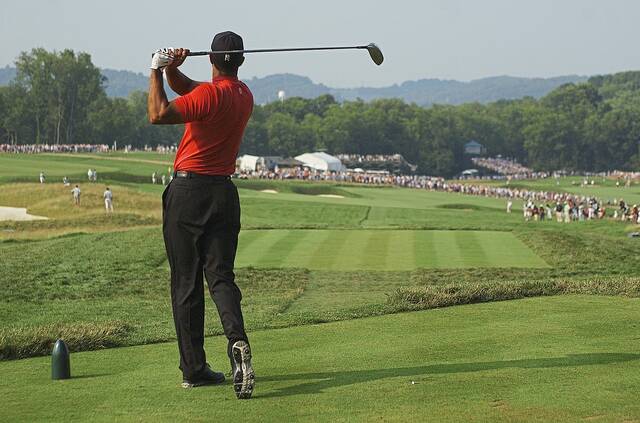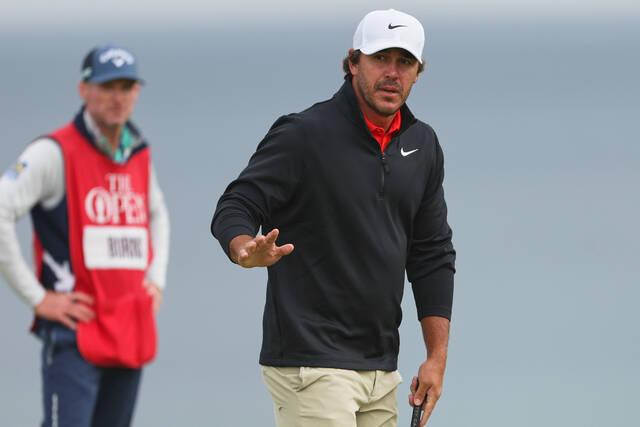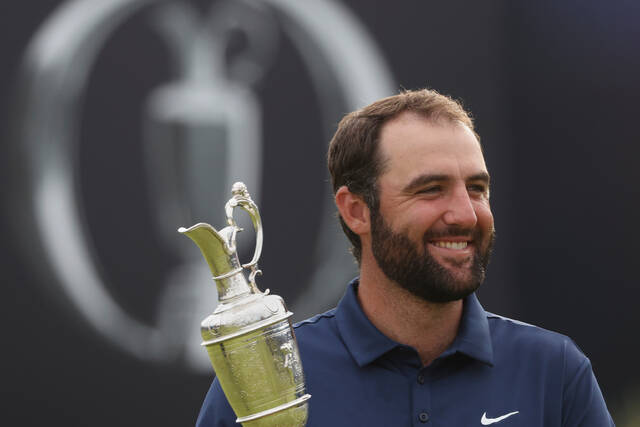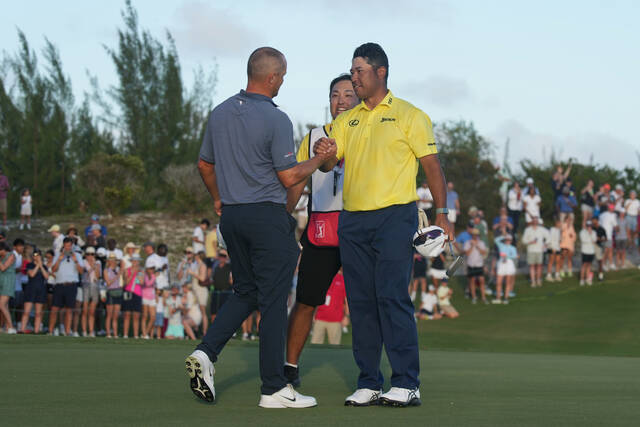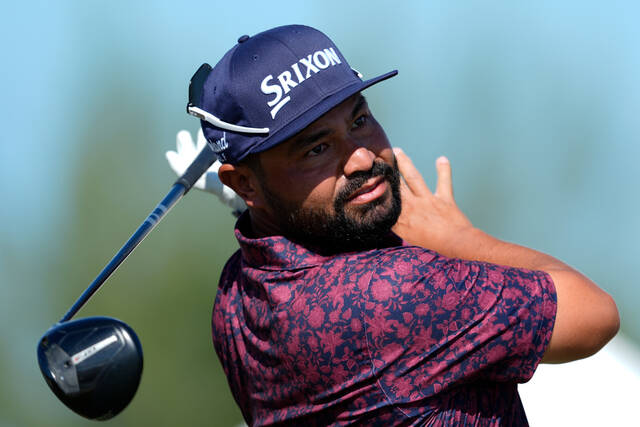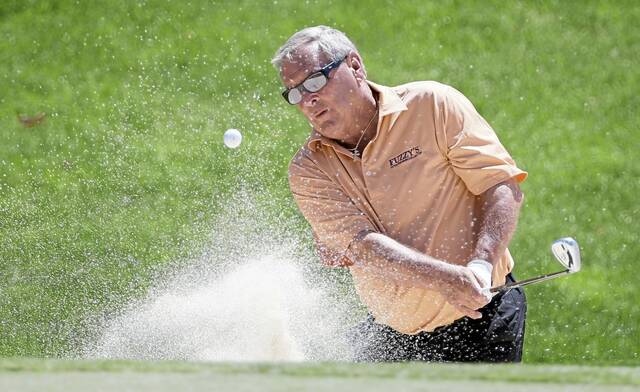From the pristine fairways and lightning-fast greens to the punishing bunkers and club-twisting rough, Oakmont Country Club is one of the toughest tests for even the world’s best golfers, who will descend upon Western Pennsylvania for the 125th U.S. Open from June 12-15.
TribLive is producing a hole-by-hole look at what makes Oakmont Country Club one of the most popular and anticipated stops for the USGA.
Hole 18 breakdown
Length: 502 yards, Par 4
Handicap: 6
2016 U.S. Open stroke average: 4.32
Description
When players step to the tee on No. 18 at Oakmont Country Club, they will be able to see the clubhouse … and the finish line. But don’t expect any sighs of relief from the world’s best when they tee off on one of the most demanding finishing holes in golf.
The closing hole calls for a long and accurate tee shot to a narrowing fairway with penalizing bunkers to both sides of the landing zone. Playing along the left side is recommended to provide the best angle at an approach.
The large green, surrounded by stadium-style bleachers that will be full of fans, is fast and undulating with different levels. There are sizable bunkers to the left and right, as well as a false front at the end of the fairway.
Played correctly, and a rousing ovation is awaiting as golfers walk off the 18th green. As the final group reaches the green in the final round, fans will encircle the putting surface to witness the final putts of the tournament, creating a surreal setting at Oakmont.
In 2007, just 33% of players hit the green in regulation. And in 2016, there were just 33 birdies on No. 18, as well as 133 bogeys and 22 double bogeys.
Memorable moment from U.S. Open
En route to claiming the 2016 U.S. Open championship at Oakmont, Dustin Johnson birdied the 18th hole in the final round to clinch a fourth-round 69 and an overall score of 4-under-par. Runners-up Jim Furyk and Scott Piercy each bogeyed No. 18 in the final round and finished alongside Shane Lowry at 1-under.
How the locals play it
Roy Vucinich is a two-time Senior PGA Professional Player of the Year (1997-98) who tied for fourth in the 2002 Senior PGA Championship. A five-time West Penn Open and Tri-State champion, he also won the Pennsylvania Open in 1984 and the Pennsylvania PGA championship in 1988. Vucinich, 78, is the former head pro at Allegheny Country Club who was inducted into the Western Pa. Golf Hall of Fame in 2014. He qualified for the 1984 U.S. Open and played in six U.S. Senior Open events. He continues to play Tri-State PGA events throughout Western Pa.
“It’s a great par-4 playing probably close to 500 yards. Now it’s going to be a good drive aiming towards the left-hand bunker, which is slightly in the fairway. Most players will probably hit 3-wood possibly to make it 20 yards short of that. And from there, they’re probably going to hit maybe a 5- or 6-iron. And if the pin is up in the back right, especially the last day, you need to be shooting right in the middle of green.”
Around the U.S. Open
Spotlight
Patrick Cantlay
In nine U.S. Open appearances, Patrick Cantlay has never missed a cut. And after finishing third at Pinehurst last June at 4-under-par, the 33-year-old American is looking to claim his first major title.
He also had top-15 finishes the previous three years, tying for 15th at Torrey Pines in ’21 and finishing tied for 14th at The Country Club in ’22 and The Los Angeles Country Club in ’23.
He is coming off a 12th-place finish (even-par) at the Memorial Tournament, where he is a two-time champ. He has eight career wins as a pro and three top-10 finishes in 2025. He is 16th in the Official World Golf Ranking.
Cantlay was the PGA Tour Player of the Year in 2021 after he won the Tour Championship and FedEx Cup.
He was the runner-up at the 2011 U.S. Amateur at Erin Hills. He also was part of the 2011 U.S. Walker Cup team before turning pro in 2012 as the No. 1 player in the World Amateur Ranking.
Cantlay has represented the U.S. on three Presidents Cup teams and the 2021 and ’23 Ryder Cup teams.
By the numbers
443 — Rounds played at the 2016 U.S. Open at Oakmont Country Club
1 — Rounds that were bogey-free by champion Dustin Johnson in the first round (67)
75.705 — Field scoring average at the 2007 U.S. Open, the highest relative to par in the last 50 years
Quotable
“The course is awesome. It’s really hard, very fair. You really have to be strategic where you hit it and keep it in the short grass and keep it under the hole, too. You don’t want to leave yourself any kind of downhill shots or putts. I would say it’s probably the fairest but most difficult test we see year-in, year-out at the U.S. Open, but especially Oakmont is one of those places where you have to have your ‘A’ game or you’re going to get exposed very quickly.”
— Ryan Gerard, third-year PGA Tour pro who competed in the 2021 U.S. Amateur at Oakmont and will be in the field for the 125th U.S. Open
Oakmont history
Four golfers in the field will playing the U.S. Open at Oakmont for at least the third time:
Phil Mickelson
*Tied for 47th in 1994, missed the cut in 2007 and ’16
Lucas Glover
*Missed the cut in 2007 and ’16
Justin Rose
*Tied for 10th in 2007, missed the cut in 2016
Adam Scott
*Missed the cut in 2007, tied for 18th in ‘16
If you missed it
No. 1: U.S. Open hole by hole: No. 1 at Oakmont among world’s toughest opening tests
No. 2: U.S. Open hole by hole: Sloping green among challenges on No. 2 at Oakmont
No. 3: U.S. Open hole by hole: Church Pews a landmark hazard on No. 3 at Oakmont Country Club
No. 4: U.S. Open hole by hole: Birdie opportunity within reach on No. 4 at Oakmont
No. 5: U.S. Open hole by hole: Aggressive play can be rewarded on No. 5 at Oakmont
No. 6: U.S. Open hole by hole: Danger lurks on, around No. 6 green at Oakmont
No. 7: U.S. Open hole by hole: Players will face mental test with club selection on No. 7 at Oakmont
No. 13: U.S. Open hole by hole: A short par 3, Oakmont’s No. 13 is surrounded by sand
No. 15: U.S. Open hole by hole: Piano Keys, massive green among trouble spots on No. 15 at Oakmont
No. 17: U.S. Open hole by hole: As shortest par 4 at Oakmont, No. 17 plays pivotal role


